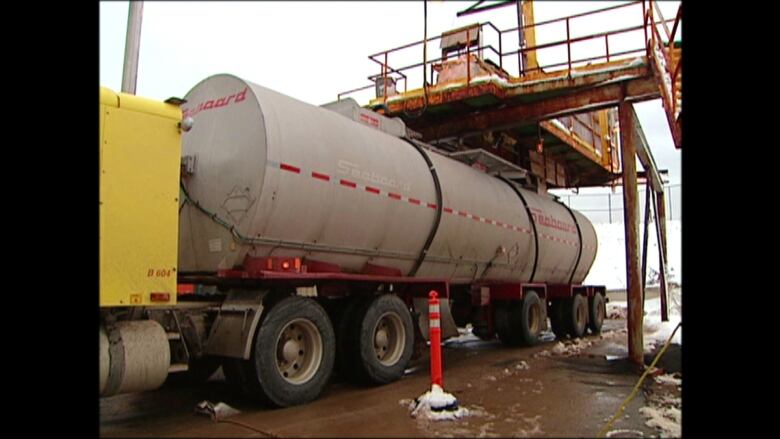PotashCorp's old Penobsquis mine could be decommissioned by spring
PotashCorp expected to register a 'decommissioning project' for environmental impact assessment

PotashCorp's announcement itwill close its brand new Picadilly mine nearSussex is not the only blow to theregion.
The company hasconfirmed once it receives environmental approvalpossibly as early as this springit will allow itsolder, original mine at Penobsquisto fill with water.
Since the late 1990s, mine workers have had to pump continuously to keep that mine from flooding andfighting that flood has become an industry of its own.
As oftenas 100 times a day, trucks pullinto the yard at the Penobsquis mineto fill up with brine, pumped from deep in the mine where it leaks in at a rate of 4,500litres perminute.
- PotashCorp mine closure will have widespread economic impact
- PotashCorp mine closure in Sussex was unexpected, reporter says
- Sussex-area charities fear impact of Potash mine closure
The trucks then make the 80 kilometretrip to Saint John to dump the heavily salted water into the Bay of Fundy.
It's a round-the-clock,sevendays a week business for 43 drivers.
That'sjust for the water that cannot be handled by a brine pipeline to the bay that was built years ago.

Around 2004, the water in Jack Liddle's well turned muddy,sometimes disappearing entirely.
"It just kept gradually going. We ran out of water ...I drilled a new well and roughly a month or six weeks [later], that was dry," said Liddle.
Liddle says PotashCorp started bringing in water for them, though eventually the provincebuilt a community water system which opened in 2009.
Liddle, and others near the mine, are hooked up to thatwater system andPotashCorp picks up the tab for the water bills.
Despite the earlier problem, JackLiddlehasnothing but praise for the company.
"They've had a lot of expense with water and stuff,you know,trouble. But they did a lot of good for the community," said Liddle.
Study 'inconclusive'
According toJennifer Graham, spokesperson for the department of environment and local government, a study was done looking into whatcausedthe loss of drinking water.

It's not known if the water table in Penobsquis will return to normal once the mine is fully flooded. However, there is no going back asmost of the wells in the area were filled with cement when the new water system was installed.
Graham also saidPotashCorp is expected to register a "decommissioning project for the old Penobsquis mine"for an environmental impact assessmentin the spring.
She said the assessment registration document would include a "comprehensive Environmental Protection Plan consisting of various monitoring plans, such as surface water monitoring and ground water monitoring, as well as a plan for the decommissioning of structures on the site and a hazardous materials survey of the underground mine area."












_(720p).jpg)


 OFFICIAL HD MUSIC VIDEO.jpg)
.jpg)



























































































